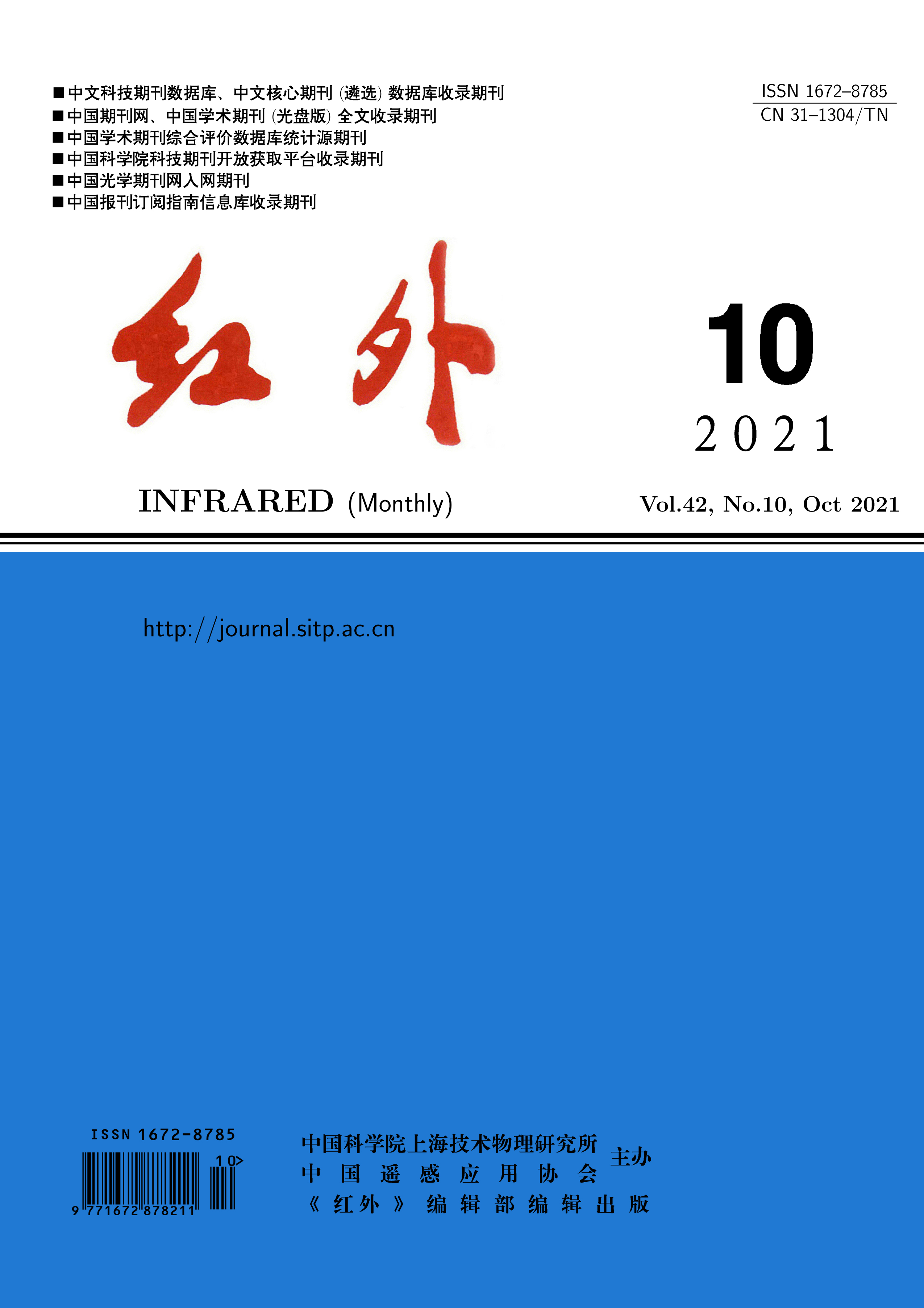
The optical simulation analysis and computer-aided alignment are carried out to solve the problems of multidegree of freedom, multichannel and complex alignment of optical components for off-axis three-mirror multispectral space camera. According to the results of the optical design, a field aperture based on ray tracing is designed, the wavefront aberrations of the infrared channel and the visible channel are given, and the sensitivity matrix of the secondary mirror and the third mirror is simulated and analyzed. The total reflection infrared channel is aligned with a visible-light interferometer. According to the Zernike aberration coefficient obtained by the interferometer, combined with the computer-aided alignment simulation results, the spatial position relationship between the secondary mirror and the third mirror is adjusted based on the primary mirror until the wavefront of the system meets the design requirements. The Root Mean Square (RMS) alignment results of the center field-of-view and the edge field-of-view of the infrared channel are 0.15λ (λ=632.8 nm) and 0.33λ respectively; the RMS values of the center field-of-view and the edge field-of-view of the visible channel are 0.06λ and 0.07λ respectively. Considering the processing and assembly errors, the alignment results are basically consistent with the design results. The on-orbit image of the camera is clear and the image quality is high.
The cold shield in the cooled infrared detector usually adopts vanes of right angle structure. The stray light reflected by the sidewall of the vanes can reach the focal plane directly, resulting in a significant decrease in the imaging quality of the detector. Based on the theoretical analysis of the vane structure, an optimized structure of the vane sidewall which suppresses stray light is proposed. The LightTools software is used to simulate and analyze the cold shield before and after optimization. The analysis results show that the total power of stray light decreases by 71.6%.Through experimental verification, it is found that the average response non-uniformity of the detectors decreases by 27.1%, and the imaging effect is significantly improved. The results show that this optimized structure is very effective in suppressing stray light.
Fine processing of sapphire material is quite difficult because of its high hardness, low thermal conductance and fragility. Through analyzing and discussing the features of picosecond pulse laser for dicing of sapphire substrates, the parameters of the laser dicing have been researched in the process of sapphire components and parts for infrared focal plane array packaging, and a series of optimized parameters have been obtained. For the sapphire transition electrode plate with a thickness of 0.4 mm commonly used in infrared focal plane array packaging, the best dicing effect is achieved when the combined dicing parameter is P(100)X(0.01/20) Y&Z(12) Z(0.1/3). The influence of the change of laser power parameters on dicing is analyzed, and some problems in the actual dicing operation are discussed.
The concept,purpose as well as the components of vibration test are introduced,and a brief description of various tests is given. In addition, the weaknesses of infrared detector which can be examined by vibration test are elaborated. The sensors play a decisive role in ensuring the accuracy of test data. The installation method,installation angle and the control point selection of the sensors are mainly analyzed. The correct fixation mode of the sensor can reduce the static noise of the system from 0.105 mV to 0.019 mV. In the test, the single-point control of the sensor will lead to the amplification of some frequency point data of the detector by 22.9 times. The research and application of multi-point control can control the magnitude of vibration at 1.007 times, effectively ensuring the accuracy of the vibration test.
Infrared spectroscopy technology is a new and high technology used in food health inspection, biological pharmacy and environmental monitoring. In order to eliminate baseline drift during application, an infrared spectral baseline correction algorithm based on wavelet optimal decomposition scale is proposed. First, the multi-layer wavelet decomposition and reconstruction are performed on the original spectral signal, and the signal-to-noise ratio of each layer is calculated. Then, the denoised spectral signal is obtained by SNR contrast. The multi-layer wavelet decomposition is performed on the denoised signal to obtain the frequencies of the wavelet detail and wavelet approximation. The two frequencies are divided and the ratio is calculated. Then, the ratios of all the layers are compared, and the maximum one is selected as the best number of decomposition layers. Finally, the spectral signal after baseline correction can be obtained by setting the wavelet approximation coefficient to zero at the optimal decomposition layer number and reconstructing the wavelet. After the experiment verification, it is found that this algorithm can not only provide the basis for the optimal number of layers for wavelet decomposition, but also can remove the high frequency noise and low frequency baseline interference while retaining the useful signals better. The baseline correction is quite sufficient and the effect is good.
In order to adapt to safety and quality inspection requirements of different types of constructions based on the infrared non-contact method, a large zoom-ratio uncooled infrared continuous zoom imaging optical system with a focal length of 30~180 mm is designed based on a new type of high-performance uncooled longwave infrared detector whose resolution is 1024×768,and pixel size is 14 μm×14 μm. The system uses positive group compensation structure whose variable times group focal degree is negative and compensation group focal degree is positive, and distributes the focal degree of each lens group reasonably as well. Its operating band is 8--12 μm, and F number is 1.2.The imaging effect of the system is analyzed, and the results show that the system has a good image quality in the zoom process, and the MTF value at the detector characteristic frequency 36 1p/mm is greater than 0.3, which meets the application requirements.










